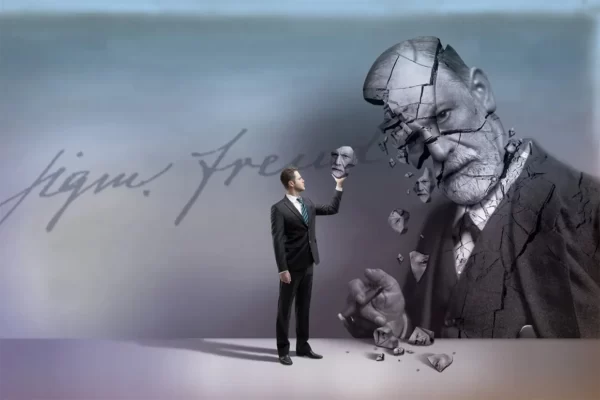Exhibitionism – a phenomenon that raises many questions and debates in society. This is a complex topic that touches upon psychological, social, and legal aspects of human behavior. In this article, I will explore exhibitionism from various perspectives, so that you can better understand this phenomenon and its impact on society.
Exhibitionism is a recurrent and persistent urge to expose one’s genitals to strangers (usually of the opposite sex) or in public places without any intention or invitation for more intimate contact. Such behavior is often accompanied by sexual arousal and can cause discomfort, fear, or shock in unintentional witnesses.
The history of exhibitionism as a phenomenon dates back to ancient times. However, it was only at the end of the 19th century that it was classified as a separate concept in psychiatry. French psychiatrist Charles Lasègue first described exhibitionism as a distinct disorder in 1877. Since then, the understanding of this phenomenon has evolved significantly, reflecting changes in society and scientific approaches to the study of human behavior.

Psychological Aspects
The human psyche is a complex system in which conscious and unconscious processes intertwine, forming the unique behavior patterns of each individual. Exhibitionism, as an expression of human sexuality, is no exception and has deep psychological roots.
Studying the psychological aspects of exhibitionism requires an interdisciplinary approach, combining knowledge from psychoanalysis, cognitive psychology, and neurobiology. Only such a comprehensive view allows us to understand the complex nature of this phenomenon and to develop effective methods for its correction.
It is important to note that exhibitionism does not exist in isolation – it is always embedded in a broader context of personality, life experience, and social environment. Therefore, analyzing the psychological aspects of exhibitionism inevitably involves questions of identity formation, interpersonal relationships, and social adaptation.
Motivation Behind Exhibitionistic Behavior
Understanding the motivation behind exhibitionistic behavior is key to studying and treating it. Psychologists identify several primary factors that may underlie such behavior:
- Seeking attention. Some exhibitionists aim to attract attention, even if that attention is negative.
- Sense of power. The act of exhibitionism can give a person a sense of control over the situation and others.
- Sexual gratification. For some, exposing themselves to others serves as a source of sexual arousal.
- Compensation for low self-esteem. Exhibitionism may be a way to combat feelings of inadequacy or insecurity.
- Rebellion against social norms. In some cases, exhibitionism can be a form of rebellion against societal rules and restrictions.
Psychological Theories Explaining This Phenomenon
There are several psychological theories that attempt to explain the phenomenon of exhibitionism:
- Psychoanalytic theory. According to Freud and his followers, exhibitionism may result from unresolved conflicts in psychosexual development, especially during the phallic stage.
- Learning theory. This theory suggests that exhibitionistic behavior may be the result of positive reinforcement (e.g., sexual arousal or attention) after acts of exposure.
- Cognitive-behavioral theory. According to this approach, exhibitionism may be associated with distorted thought patterns and misinterpretations of social signals.
- Biological theory. Some researchers suggest that exhibitionism may be linked to abnormalities in certain brain areas responsible for impulse control and sexual behavior.
- Attachment theory. This theory considers exhibitionism as a possible result of disrupted attachment relationships in early childhood.

Medical Classification
Medical science strives for the systematic organization of knowledge, establishing clear criteria and classifications. This is essential for effective diagnosis, treatment, and research of various conditions, including complex ones like exhibitionism.
The classification process of paraphilic disorders, including exhibitionism, reflects the evolution of scientific understanding of human sexuality and mental processes. It also demonstrates how societal norms and perceptions of what constitutes normal and pathological behavior change.
It is important to understand that medical classification is not just an academic exercise. It has real consequences for the diagnosis, treatment, legal assessment, and social perception of people with exhibitionistic tendencies.
Diagnostic Criteria
In modern psychiatry, exhibitionism is classified as a paraphilic disorder. According to the Diagnostic and Statistical Manual of Mental Disorders (DSM-5), the following criteria must be met to diagnose “exhibitionistic disorder”:
- For at least 6 months, there are recurring and intense sexual urges, fantasies, or behaviors associated with exposing one’s genitals to unsuspecting individuals.
- The person acts on these urges, or these urges or fantasies cause significant distress or interpersonal difficulties.
It is important to note that not all cases of public exposure are classified as exhibitionistic disorder. A diagnosis is only made when such behavior causes significant distress or interferes with the person’s ability to interact normally with others.
Association with Other Disorders
Exhibitionism often coexists with other mental disorders or may be symptomatic of them. Some of the conditions most commonly associated with exhibitionism include:
- Other paraphilias. Exhibitionism may be combined with other paraphilic disorders, such as voyeurism or frotteurism.
- Obsessive-compulsive disorder (OCD). Some studies suggest a connection between OCD and exhibitionism, especially when exhibitionistic behavior is obsessive.
- Mood disorders. Depression and bipolar disorder may coexist with or influence exhibitionistic behavior.
- Personality disorders. Certain types of personality disorders, particularly antisocial and narcissistic, may be associated with an increased risk of exhibitionistic behavior.
- Substance use disorders. Alcohol or drug abuse can lower impulse control and increase the likelihood of exhibitionistic behavior.
Understanding these connections is important for accurate diagnosis and effective treatment selection. A comprehensive approach that considers possible comorbid disorders is often the most effective in treating exhibitionism.

Social and Legal Aspects
Society is a complex system of interactions, norms, and values that is constantly evolving. Exhibitionism, as a phenomenon on the boundary between the personal and public spheres, inevitably becomes a subject of social discussion and legal regulation.
The legal assessment of exhibitionism reflects a balance between protecting public morals and individual freedom. This is a challenging task that requires consideration of many factors, from the psychological characteristics of the individual to the cultural norms of a particular society.
It is interesting to note how the development of technology and changing social norms influence the perception and regulation of exhibitionism. What was considered unacceptable a few decades ago may be perceived differently today, and vice versa.
Society’s Attitude Toward Exhibitionism
Public attitudes toward exhibitionism range from complete rejection to relative tolerance, depending on cultural context and specific circumstances. In most modern societies, exhibitionism is considered deviant behavior, violating social norms and potentially traumatizing for unwilling witnesses.
- Stigmatization. Exhibitionists are often highly stigmatized, which can hinder their seeking help and social reintegration.
- Gender differences in perception. Society generally has a more negative attitude toward male exhibitionism than female, reflected in legal approaches and public discourse.
- Media influence. The media and social networks play a significant role in shaping public opinion about exhibitionism, often dramatizing or sensationalizing such cases.
- Educational initiatives. In some countries, efforts are being made to raise public awareness of exhibitionism as a mental disorder, which may contribute to a more balanced approach to the issue.
Legal Consequences in Different Countries
Legislation regarding exhibitionism varies significantly across countries and cultures. However, in most jurisdictions, exhibitionism is considered an offense or crime.
- Ukraine. Exhibitionism is classified as an administrative offense under Article 173 of the Code of Ukraine on Administrative Offenses as “petty hooliganism” or as a criminal offense “indecent acts” under Article 156 of the Criminal Code of Ukraine if minors are involved.
- USA. In most states, exhibitionism is classified as a misdemeanor (less serious offense), but repeated offenses can lead to more serious charges. In some cases, exhibitionists may be required to register as sex offenders.
- European Union. Laws vary from country to country, but in general, exhibitionism is regarded as a public order violation or a sexual offense. Penalties may include fines, community service, or imprisonment.
- Japan. Laws on exhibitionism are relatively lenient, and such cases are often viewed as a public order violation rather than a sexual offense.
- Islamic countries. In countries with Sharia law, exhibitionism may be considered a serious crime with severe punishments.
It is important to note that legal approaches to exhibitionism continue to evolve, reflecting changes in public understanding of this phenomenon and advances in scientific knowledge about the nature of paraphilic disorders.

Impact on Victims
Any deviant behavior creates ripples that extend far beyond the immediate act. Exhibitionism, despite its seemingly “non-contact” nature, can have a profound and lasting impact on those who are unwillingly exposed to it.
Victims’ reactions to exhibitionism can be as varied as people themselves. From fleeting discomfort to deep psychological trauma, the range of potential consequences is broad and depends on numerous factors, including personal experience, cultural background, and mental resilience.
Studying the impact of exhibitionism on victims is important not only for providing them with support but also for gaining a deeper understanding of the mechanisms behind the formation of social norms and individual responses to boundary violations.
Psychological Consequences for Witnesses
Exhibitionist acts can significantly affect unwitting witnesses on a psychological level. The degree and nature of this impact can vary depending on individual characteristics of the victim, the situational context, and the frequency of similar experiences.
- Shock and Disorientation. The initial reaction to an unexpected encounter with an exhibitionist often includes feelings of shock, confusion, and disorientation.
- Fear and Anxiety. Many victims experience fear during the incident and increased anxiety afterward.
- Anger and Irritation. Some people respond with anger due to the violation of their personal boundaries and societal norms.
- Feelings of Shame and Guilt. Paradoxically, some victims may feel shame or guilt, even though they bear no responsibility for the incident.
- Post-Traumatic Symptoms. In some cases, especially with repeated incidents or among more vulnerable individuals, post-traumatic stress disorder (PTSD) symptoms may develop.
- Behavioral Changes. Victims may alter their habits to avoid places or situations reminiscent of the incident.
- Long-Term Psychological Effects. For some people, encountering an exhibitionist can lead to long-term issues with trust, intimacy, or a general sense of safety.
At-Risk Groups
Certain groups of people are considered more vulnerable to the negative effects of encountering exhibitionists:
- Children and Adolescents. Due to their immaturity and limited life experience, they may be particularly traumatized by such incidents, potentially affecting their sexual development and attitudes toward sexuality in the future.
- Victims of Sexual Assault. People who have previously experienced sexual abuse or harassment may have stronger negative reactions to exhibitionist acts, as this can trigger memories of past psychological trauma.
- Older Adults. Due to possible physical vulnerability and conservative views, older people may experience significant stress upon encountering an exhibitionist.
- People with Mental Disorders. Individuals suffering from anxiety disorders, depression, or PTSD may be more susceptible to the negative effects of such incidents.
- Women. Statistically, women are more often victims of exhibitionists and may experience greater fear and discomfort due to their general vulnerability to sexual offenses.
- Religious and Conservative Groups. People with strict religious or conservative views may feel particularly distressed when confronted by an exhibitionist.
Understanding the characteristics of these at-risk groups is essential for developing effective support and prevention strategies, as well as for adapting legal and social responses to exhibitionism cases.

Treatment and Psychotherapy
The human psyche has a remarkable ability to change and adapt. This plasticity underpins all therapeutic approaches, including those used in treating exhibitionism.
Modern therapy for psychosexual exhibitionism is a complex process that requires an individualized approach and a combination of various methods. It goes beyond addressing symptoms to pursue a deep understanding and transformation of the personality.
It is interesting to note how advances in neuroscience and virtual reality technologies open up new possibilities for the therapy of paraphilic disorders. These innovative approaches allow the creation of safe conditions for working with problematic behavior and developing new response patterns.
Psychotherapeutic Approaches
The treatment of exhibitionism typically involves a comprehensive approach that combines various psychotherapeutic methods. The main goal of therapy is to help the person control their impulses, develop healthy forms of sexual expression, and improve overall psychological well-being.
- Cognitive Behavioral Therapy (CBT). This is one of the most effective methods for treating exhibitionism. CBT helps patients identify and change dysfunctional thoughts and behavioral patterns associated with their exhibitionist impulses. Techniques include:
- Cognitive restructuring
- Social skills training
- Stress management
- Relapse prevention
- Psychodynamic Therapy. This approach focuses on exploring unconscious conflicts and early life experiences that may have contributed to the development of exhibitionistic tendencies. The goal is to help the patient understand the roots of their behavior and find healthier ways to meet their emotional needs.
- Group Therapy. Participation in support or therapeutic groups can be beneficial for people with exhibitionistic inclinations, providing an opportunity for experience sharing, mutual support, and practicing social skills in a safe environment.
- Family Therapy. Helps improve communication, restore trust, and create a supportive environment for recovery.
- Mindfulness Training and Meditation. Mindfulness practices help patients become more aware of their thoughts and impulses and develop self-control.
- Sex Therapy. Specialized sex therapy helps in the development of healthy sexual relationships and ways of expressing sexuality.
Pharmacological Treatment
In some cases, especially when psychotherapy does not yield sufficient results or when exhibitionistic impulses are particularly strong, pharmacological treatment may be recommended. However, it is important to note that medications are usually used in conjunction with psychotherapy, not as a standalone solution.
- Selective Serotonin Reuptake Inhibitors (SSRIs). These antidepressants reduce the intensity of sexual impulses and general anxiety levels.
- Antiandrogens. Drugs that lower testosterone levels can be effective in reducing sexual drive and impulsivity. However, they have serious side effects and are usually considered only in severe cases of exhibitionism.
- Neuroleptics. Antipsychotic drugs may be prescribed in some cases, especially if exhibitionism is combined with other mental disorders.
- Naltrexone. This medication, commonly used for treating addictions, may help reduce compulsive sexual behavior.
It is important to emphasize that pharmacological treatment should only be conducted under the strict supervision of a qualified psychiatrist, taking into account the patient’s individual characteristics and potential side effects.

Cultural Differences
Culture is the lens through which we perceive the world and assess our own and others’ behavior. Attitudes toward nudity and sexuality, and therefore exhibitionism, vary greatly depending on cultural context.
Studying cultural differences in perceptions of exhibitionism allows for a better understanding of the nature of this phenomenon and its social dynamics. It also helps avoid ethnocentrism in approaches to diagnosis and treatment.
It is interesting to observe how globalization and cultural exchange influence the perception of exhibitionism in different societies. We see both the convergence of views on some aspects and the strengthening of cultural identity in others.
Perception of Exhibitionism Across Cultures
Attitudes toward nudity and sexual behavior vary significantly across cultures, which influences perceptions of exhibitionism.
- Western Cultures. In most Western countries, exhibitionism is viewed as deviant behavior and a violation of social norms. However, the degree of tolerance may vary. For instance, in some European countries, attitudes toward public nudity are more liberal than in the United States.
- Eastern Cultures. In many Asian countries, public nudity and any forms of exhibitionism are considered highly unacceptable. In Japan, despite relatively lenient laws, social condemnation of exhibitionism is very strong.
- Islamic Cultures. In predominantly Islamic countries, exhibitionism is viewed as a serious violation of religious and social norms, often leading to severe punishment.
- Tribal Cultures. In some traditional tribal societies, the concept of exhibitionism may be absent or significantly different from Western understanding, as attitudes toward nudity are distinct.
- Scandinavian Countries. A more liberal attitude toward nudity in certain contexts (such as saunas) is often observed here, but exhibitionism as a form of sexual behavior is still condemned.
Changing Attitudes Toward Nudity in History
Attitudes toward nudity and sexuality have changed significantly over history:
- Antiquity. In ancient Greek and Roman cultures, nudity was often seen as natural and even honorable, especially in the context of sports and art.
- Middle Ages. With the spread of Christianity, attitudes toward nudity became more conservative, and the body was often viewed as a source of sin.
- Renaissance. There was a renewed interest in depicting the naked body in art, although everyday norms remained conservative.
- Victorian Era. Characterized by extreme puritanism and suppression of sexuality, paradoxically possibly fostering interest in exhibitionism.
- 20th Century. The sexual revolution of the 1960s led to more open discussions about sexuality and a liberalization of attitudes toward nudity in some contexts.
- Modern Times. There is a range of approaches, from extreme conservatism to liberalism, often coexisting within a single society.
These historical and cultural differences are essential to consider when studying exhibitionism, as they influence its definition, perception, and response methods in different societies.

Exhibitionism in Art and Media
Art has always mirrored society, reflecting its fears, desires, and taboos. Exhibitionism, as a phenomenon straddling the boundary of social acceptability, inevitably finds expression in various forms of artistic representation.
It’s intriguing to observe how the representation of exhibitionism in art and media evolves over time, reflecting the shifting societal norms and values. From scandalous works that shock the public to subtler explorations of the human psyche, the spectrum of artistic interpretation of this theme is vast and diverse.
It’s essential to recognize the role of art and media in shaping public discourse around exhibitionism. They not only reflect existing views but actively participate in forming them, sometimes challenging established beliefs.
Representation of the Theme in Literature and Cinema
Exhibitionism as a phenomenon has found its reflection in various art forms, often serving as a metaphor or symbol for broader social or psychological issues.
1. Literature:
- In Vladimir Nabokov’s novel Lolita, the theme of exhibitionism intertwines with a broader exploration of tabooed sexuality.
- Works by Charles Bukowski frequently touch on themes of public nudity and deviant sexual behavior.
- In contemporary literature, exhibitionism can be used as a character trait or plot device to explore themes of freedom and social constraints.
2. Cinema:
- The film American Psycho (2000) uses elements of exhibitionism to illustrate the protagonist’s psychological state.
- In the comedy The Naked Gun (1988), exhibitionism serves as a source of humor, reflecting social taboos.
- The documentary Naked Life (2014) explores the phenomenon of public nudity and its perception across different cultures.
3. Theater:
- Peter Shaffer’s play Equus touches on themes of sexuality and exhibitionism within the context of psychological drama.
- Modern experimental productions sometimes include elements of nudity and exhibitionism as a form of artistic expression.
Impact of Modern Technology on Forms of Manifestation
The development of technology and the internet has significantly influenced forms of manifestation and perceptions of exhibitionism:
- Social Media. Platforms like Instagram or TikTok have created new forms of “virtual exhibitionism,” where users can share provocative photos and videos with a wide audience.
- Streaming Platforms. The rise of live-streaming platforms has led to new forms of online exhibitionism, where people can showcase themselves in real-time.
- Sexting. Sending intimate photos through messaging apps has become a common practice, blurring the boundaries between private and public.
- Virtual Reality. VR technologies offer new possibilities for virtual exhibitionism, raising questions about its ethical and legal aspects.
- Deepfake Technology. The ability to create fake videos with nude people introduces new ethical and legal questions related to consent and privacy.
- Cybersecurity. Hacking attacks and data leaks can result in unintended “exhibitionism” when private photos and videos become public.
- Online Communities. The internet has enabled specialized forums and groups for individuals with exhibitionist tendencies, which can both aid in seeking help and reinforce problematic behavior.
These technological changes present new challenges for legislators, psychologists, and society at large, requiring a reassessment of traditional approaches to understanding and regulating exhibitionism.

Prevention and Public Education
Preventing a problem is always more effective than dealing with its consequences. This statement is especially true when it comes to complex phenomena like exhibitionism, where individual psychological factors intersect with social norms.
Education plays a key role in forming a healthy attitude towards sexuality and understanding the limits of acceptable behavior. However, this is not just about imparting information—it’s a complex process of shaping values and skills that requires a delicate balance between openness and respect for cultural norms.
It is worth noting how digital technology is changing the landscape of prevention and education in the field of sexual health. Online platforms open new opportunities for disseminating information and providing support, but they also create new challenges requiring innovative approaches.
Methods of Preventing Incidents
Preventing exhibitionism involves a set of measures aimed at both potential exhibitionists and society as a whole:
- Early Detection and Intervention:
- Training educators, psychologists, and medical professionals to recognize early signs of paraphilic disorders.
- Developing accessible psychological assistance programs for people struggling to control sexual impulses.
- Improving Urban Environment:
- Proper lighting and planning of public spaces to reduce opportunities for exhibitionist behavior.
- Installing surveillance cameras in high-risk areas.
- Legal Measures:
- Toughening penalties for repeat exhibitionism offenses.
- Developing rehabilitation programs for convicted exhibitionists.
- Technological Solutions:
- Creating apps for quickly notifying law enforcement about exhibitionism incidents.
- Using artificial intelligence to monitor online content and detect potentially dangerous behavior.
- Social Support:
- Establishing support groups for individuals suffering from exhibitionist tendencies.
- Providing access to anonymous consultations and therapy.
- Educational Programs:
- Including information on sexual health and deviant behavior in school curricula.
- Conducting workshops and training sessions for parents on sexual education topics.
The Role of Education in Understanding the Problem
Education plays a key role in fostering a healthy attitude toward sexuality and understanding the issue of exhibitionism:
- Sexual Education:
- Implementing comprehensive sexual education programs in schools, covering topics of consent, boundaries, and healthy relationships.
- Adapting educational materials for different age groups.
- Professional Training:
- Preparing mental health professionals to work with paraphilic disorders.
- Training law enforcement on how to respond appropriately to cases of exhibitionism.
- Public Awareness:
- Conducting informational campaigns about the nature of exhibitionism and ways to respond to such behavior.
- Using social media to spread accurate information and dispel myths about exhibitionism.
- Media Literacy:
- Teaching critical analysis of the portrayal of sexuality and deviant behavior in media.
- Developing safe online behavior skills.
- Cultural Competency:
- Considering cultural differences in perceptions of nudity and sexuality when developing educational programs.
- Creating inclusive materials that respect diverse sexual identities and cultural nuances.
- Research and Knowledge Sharing:
- Supporting scientific research in sexology and psychiatry.
- Organizing conferences and seminars for knowledge exchange among specialists from different countries.
Effective education and prevention require a comprehensive approach, uniting the efforts of educators, psychologists, healthcare professionals, law enforcement, and society as a whole.

Conclusion
Exhibitionism is a complex and multifaceted phenomenon situated at the intersection of individual psychology, social norms, and cultural traditions. It is not merely an isolated behavioral anomaly but a symptom of deeper psychological processes with significant social implications.
In conclusion, it is worth noting that our understanding of exhibitionism continues to evolve. Future research will undoubtedly shed light on many aspects of this phenomenon that remain unclear today. It is essential to continue interdisciplinary dialogue, bringing together the efforts of psychologists, sociologists, lawyers, and other professionals to develop effective strategies for prevention, treatment, and social adaptation.
Exhibitionism remains a complex and sensitive topic that requires a delicate and scientifically grounded approach. Only through open dialogue and comprehensive educational initiatives can we better understand this phenomenon and develop effective strategies for its prevention and management, respecting the dignity and rights of all involved parties.




